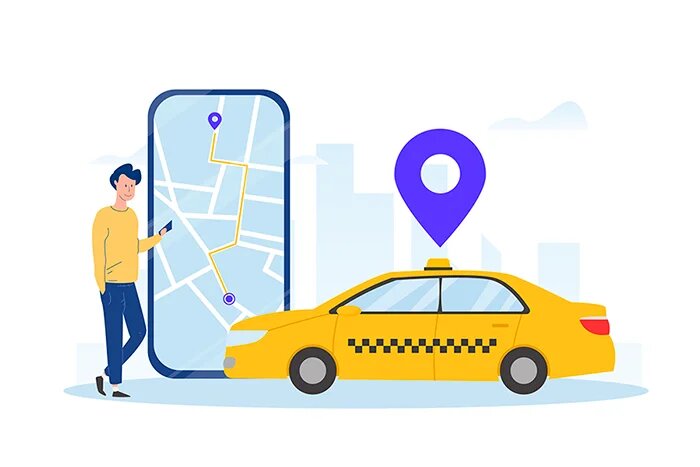Technical Aspects of Developing a Taxi Booking App

In today’s fast-paced world, the transportation industry has witnessed a significant transformation with the advent of on-demand taxi booking apps. Developing a successful taxi app involves a careful consideration of various technical aspects to ensure a seamless user experience and efficient operations. In this article, we will delve into the key technical components and considerations involved in the process of developing a taxi booking app.
App Architecture and Platform
The foundation of a successful taxi booking app lies in its architecture. Developers need to choose the appropriate technology stack, such as programming languages (Java, Swift, Kotlin, etc.), frameworks, and databases, to build a scalable and robust platform. Additionally, deciding between native, hybrid, or cross-platform development depends on factors like development time, performance, and user experience.
User and Driver Authentication
Security is paramount in any app, especially one handling sensitive information like user data and payment details. Implementing secure user and driver authentication processes is crucial. Techniques like two-factor authentication (2FA) and biometric authentication can enhance the app’s security, protecting both users and drivers from unauthorized access.
Real-time GPS Tracking
An integral feature of any taxi app is real-time GPS tracking, allowing users to track their ride and drivers to navigate efficiently. Developers must integrate reliable GPS and mapping services, like Google Maps or Map box, to ensure accurate and seamless location tracking. This functionality enhances user trust and overall satisfaction.
Ride Matching Algorithm
Efficiently matching riders with available drivers is a critical aspect of a taxi app’s success. A well-designed ride matching algorithm considers factors such as location, distance, traffic, and driver availability. Advanced algorithms can optimize routes and reduce wait times, leading to improved user experiences.
Payment Gateway Integration
Developing a secure and smooth payment system is essential to enable cashless transactions within the app. Integrating popular payment gateways ensures that users can pay seamlessly using credit/debit cards, digital wallets, or other preferred payment methods. Implementing strong encryption safeguards users’ financial information.
Ratings and Reviews System
To maintain a high standard of service, implementing a ratings and reviews system is crucial. Users can provide feedback on their ride experience, allowing for continuous improvement. Developing an algorithm that considers various factors while calculating driver ratings helps ensure fairness and accuracy.
Notifications and Alerts
Effective communication is key to keeping users and drivers informed. Implementing a robust notification system ensures that users receive updates about ride confirmations, driver arrivals, and more. Push notifications and in-app alerts keep users engaged and informed throughout their journey.
Scalability and Performance
As the user base grows, the app must be able to handle increased traffic and demand. Building a scalable architecture that can accommodate higher loads without compromising performance is vital. Regular performance testing and optimization are necessary to ensure a smooth user experience even during peak times.
Regulatory Compliance
The taxi industry is subject to various regulations and legal requirements. Develop taxi app involves adhering to local transportation laws, data protection regulations, and privacy standards. Compliance ensures the app’s legitimacy and protects both users and drivers.
Maintenance and Updates
App development doesn’t end with the initial launch. Regular maintenance, updates, and feature enhancements are necessary to keep the app relevant and competitive. Continuously monitoring app performance, addressing bugs, and incorporating user feedback contribute to the app’s long-term success.
Conclusion
Creating a taxi booking app demands a multifaceted approach, orchestrated by a proficient Ride Sharing App Development Company, to guarantee technical prowess, user contentment, and operational streamlining. By meticulously contemplating and integrating the aforementioned technical facets, the adept developers can forge a dependable and user-centric platform, catalyzing a paradigm shift within the transportation sector. It’s crucial to bear in mind that the triumph of a taxi app transcends its initial launch phase, necessitating consistent vigilance to sustain relevance and deliver an unparalleled user experience.








